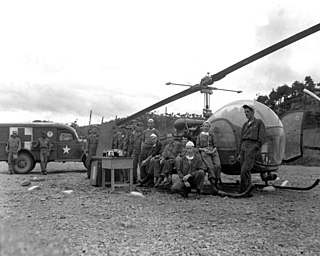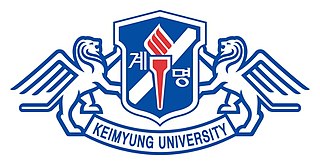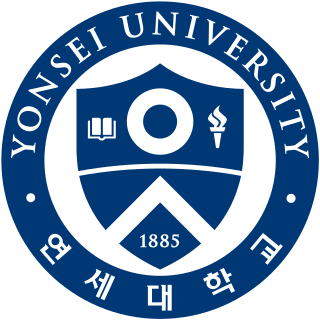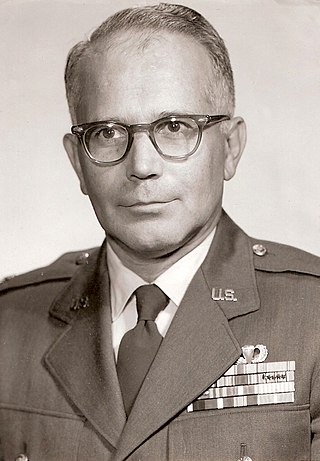
The Korean War was fought between North Korea and South Korea from 1950 to 1953. The war began on 25 June 1950 when North Korea invaded South Korea. The war ceased with an armistice on 27 July 1953. North Korea was supported by China and the Soviet Union while South Korea was supported by the United States and the United Nations (UN).

The Korean People's Army is the military force of North Korea and the armed wing of the Workers' Party of Korea (WPK). The KPA consists of five branches: the Ground Force, the Naval Force, the Air Force, Strategic Force, and the Special Operation Force. It is commanded by the WPK Central Military Commission, which is chaired by the WPK general secretary, and the president of the State Affairs; both posts are currently headed by Kim Jong Un.
Operations research, often shortened to the initialism OR, is a discipline that deals with the development and application of analytical methods to improve decision-making. The term management science is occasionally used as a synonym.
Desegregation is the process of ending the separation of two groups, usually referring to races. Desegregation is typically measured by the index of dissimilarity, allowing researchers to determine whether desegregation efforts are having impact on the settlement patterns of various groups. This is most commonly used in reference to the United States. Desegregation was long a focus of the American civil rights movement, both before and after the US Supreme Court's decision in Brown v. Board of Education, particularly desegregation of the school systems and the military. Racial integration of society was a closely related goal.
Military science is the study of military processes, institutions, and behavior, along with the study of warfare, and the theory and application of organized coercive force. It is mainly focused on theory, method, and practice of producing military capability in a manner consistent with national defense policy. Military science serves to identify the strategic, political, economic, psychological, social, operational, technological, and tactical elements necessary to sustain relative advantage of military force; and to increase the likelihood and favorable outcomes of victory in peace or during a war. Military scientists include theorists, researchers, experimental scientists, applied scientists, designers, engineers, test technicians, and other military personnel.

An academy is an institution of secondary or tertiary higher learning. The name traces back to Plato's school of philosophy, founded approximately 386 BC at Akademia, a sanctuary of Athena, the goddess of wisdom and skill, north of Athens, Greece.

Mobile Army Surgical Hospitals (MASH) were U.S. Army field hospital units conceptualized in 1946 as replacements for the obsolete World War II-era Auxiliary Surgical Group hospital units. MASH units were in operation from the Korean War to the Gulf War before being phased out in the early 2000s. Each MASH unit had 60 beds, as well as surgical, nursing, and other enlisted and officer staff available at all times. MASH units filled a vital role in military medicine by providing support to army units upwards of 10,000 to 20,000 soldiers. These units had a low mortality rate compared to others, as the transportation time to hospitals was shorter, resulting in fewer patients dying within the "Golden Hour", the first hour after an injury is first sustained, which is referred to in trauma as the "most important hour". The U.S. Army deactivated the last MASH unit on February 16, 2006, and the successors to Mobile Army Surgical Hospitals are combat support hospitals.

The practice of Christianity in Korea is marginal in North Korea, but significant in South Korea, where it revolves around two of its largest branches, Protestantism and Catholicism, accounting for 8.6 million and 5.8 million members, respectively. The initial variety of Christianity in the peninsula, Nestorianism, spread to Korea in the Middle Ages by way of China via Middle Eastern adherents to the Church of the East. Catholicism was first introduced during the late Joseon Dynasty period by Confucian scholars who encountered it in China. In 1603, Yi Su-gwang, a Korean politician, returned from Beijing carrying several theological books written by Matteo Ricci, an Italian Jesuit missionary to China. He began disseminating the information in the books, introducing Christianity to Korea. In 1758, King Yeongjo of Joseon officially outlawed Catholicism as an "evil practice." Catholicism was reintroduced in 1785 by Yi Seung-hun and French and Chinese Catholic priests were soon invited by the Korean Christians.

Keimyung University, abbreviated as KMU or Keimyung (啓明), is a private university located in Daegu, the fourth largest city in South Korea. The university takes roots from Jejungwon founded in 1899. The higher education started in 1954 with the support of the leaders of the Northern Presbyterian Church of the U.S. as a Christian university. KMU is composed of three campuses in the city of Daegu, South Korea. They are named for their locations within the city; Daemyeong, which is near the downtown area, Seongseo, which is in the western part of the city, and also Dongsan campus which includes Dongsan Medical Center. The university's Seongseo campus is known as one of the most beautiful campuses in South Korea.

Yonsei University is a Christian private university in Seoul, South Korea. It is part of the SKY universities.

Education in South Korea is provided by both public schools and private schools. Both types of schools receive funding from the government, although the amount that the private schools receive is less than the amount of the state schools.

The University of Hawaiʻi Press is a university press that is part of the University of Hawaiʻi.
The Military Operations Research Society (MORS) is a society for professionals active within defense applications of operations research (OR) in the United States. Memberships include analysts, researchers, consultants and officers in the United States Department of Defense, organizations within the military of the United States, various think tanks, academic institutions and consultancy firms.

Women in South Korea have experienced significant improvements for social changes in recent years, compared to previous times, when Confucianism was deeply imbued in the culture. The economy of South Korea has tremendously improved due to urbanisation, industrialisation, military authoritarianism, democratic reform, and social liberalisation since the late 1960s. Gender roles and gender identities have been modified in response to modernity. More than half of South Korean women are employed. In a 2018 OECD economy survey, it was 56.1%. It is lower than OECD average. More than 25% of married women are employed as full-time workers.

Academy of Korean Studies is a South Korean research and educational institute with the purpose of establishing profound research on Korean culture. It was established on June 22, 1978, by Ministry of Education & Science Technology of South Korea (교육과학기술부). The Academy has dedicated to interpreting and analyzing Korean culture in general, defining the academic identity of Korean studies, and educating scholars.

Colonel William Paul Fife USAF (Ret) was a United States Air Force officer that first proved the feasibility for U.S. Air Force Security Service airborne Communications Intelligence (COMINT) collection and Fife is considered the "Father of Airborne Intercept". Fife was also a hyperbaric medicine specialist who was known for his pioneering research on pressurized environments ranging from high altitude to underwater habitats. Fife was a Professor Emeritus at Texas A&M University.
The Asia-Pacific Journal of Operational Research (APJOR) aims to provide a "forum for practitioners, academics and researchers in Operational Research and related fields, within and beyond the Asia-Pacific region". It is also the official journal of the Association of Asian-Pacific Operational Research Societies within IFORS (APORS)] and is published by World Scientific. It has an emphasis on papers of practical relevance to the field of Operational Research.

Military history is the study of armed conflict in the history of humanity, and its impact on the societies, cultures and economies thereof, as well as the resulting changes to local and international relationships.
Operation Glory was an American effort to repatriate the remains of United Nations Command casualties from North Korea at the end of the Korean War. The Korean Armistice Agreement of July 1953 called for the repatriation of all casualties and prisoners of war, and through September and October 1954 the Graves Registration Service Command received the remains of approximately 4,000 casualties. Of the 1,868 American remains, 848 unidentified remains were buried as "unknowns" at the National Memorial Cemetery of the Pacific in Hawaii.
The term public diplomacy was first coined and used by Edmund Gullion in 1965 and the concept developed gradually. More recently, the definition of public diplomacy differs according to different authors. Taehwan Kim in his article "Paradigm Shift in Diplomacy: A Conceptual Model for Korea's 'New Public Diplomacy'" defines it as "a diplomatic practice or field of academic research which includes non-conventional actors to promote diplomacy of the people". As the importance of public diplomacy increases, South Korea is putting more efforts to engage in the new trend of diplomacy. Muzaffar S. Abduazimov in his article "Public Diplomacy: Reappraising the South Korean Case through an Evolutionary Approach" presents four evolutionary periods of South Korean public diplomacy: origins, diversification, polycentrism, and institutionalization (2011–present).












